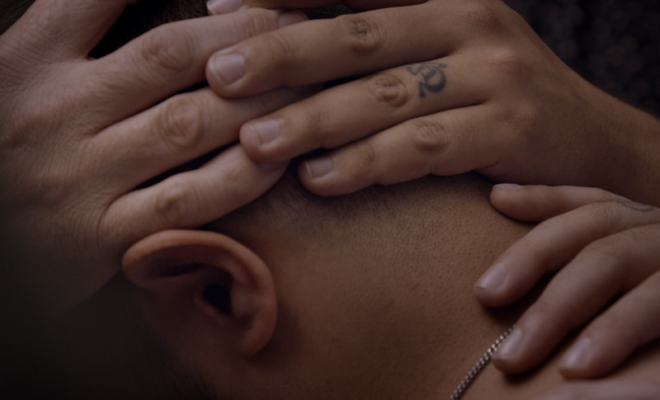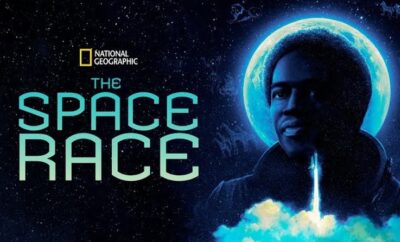
Movie Reviews
Pray Away
By: Kelly Kearney
In Kristine Stolaki’s documentary Pray Away, we take a look at the devastating effects of conversion therapy and the LGBTQ+ victims it left behind. Included in the film are videos from these groups tactics as well as interviews from former members and leaders of the now defunct, Exodus, who led the charge for converting queer Christians to heterosexuality.
Ex-Ex-Gays
The year was 1988 when John Paulk and his wife graced the cover of Newsweek as the spokespeople for a new type of therapy promising to convert people’s same sex attraction to a lifestyle more in line with Christianity’s laws. Like the Barbie and Ken of straight-dom, the Paulk’s were paraded around in public and on talk shows as undeniable proof that sexuality was a choice that could be changed with the right amount of God and peer support. As the film captures John’s seemingly happy married life, we soon learn time at home was less than ideal. The mask John hid behind was starting to slip. And once he was photographed in a Washington D.C. gay bar on a lobbying trip to the Capitol to appeal Exodus’ Conservative donors, his straight cover was blown. His public downfall, which resulted in a boot from Exodus and losing his wife of many years, rocked the movement but gave validation to the thousands who left the abusive group behind to reenter the LGBTQ+ community.
The history of Exodus and its many off shoots began in the late 1970’s and quickly rose to fame with a growing member’s list that reached thousands across the country. It was the answer so many Christian queers were praying for. The fear of ex-communication and family strife was over and now they had a place to share their struggles with others in hopes of avoiding holy retribution from an angry God. Conversion, as it was sold from the pulpit, was a chance at a religiously focused do-over. It was a “get out of Hell free card” and all it took was a commitment to this new style of therapy. One that, by today’s standards, has been deemed dangerous and ineffective by every major medical and mental health professional in America; not to mention other parts of the world.
Produced by out content creator Ryan Murphy, Pray Away spends most of its time focusing on the California based conversion therapy group Exodus. As it interviews people like co-founder and ex-ex-gay Michael Busse, who left the organization not long after he began to notice the harmful effects it unleashed on its members, viewers get an up-close look at how these groups operate and the subsequent lives they destroy. Even with the objections from Busse, Exodus continued their wrath on the LGBTQ community throughout its decade’s long operation inspiring other programs of conversion that continue to decimate the LGBTQ+ community today. In a country where equal marriage is the law of the land and LGBTQ+ acceptance is embraced by the majority of U.S. citizens; it is unimaginable how many church leaders still promote this dangerous idea. Luckily, laws across the nation banning these therapies have all but forced most into the shadows of their own closet.
Coming To Terms With the Damage They Caused
As the documentary showcases the sympathy and shame from people like Busse and other former members seen spreading their influence throughout the halls of America’s political right-winged establishment, the eventual downfall of conversion therapy came from the simple fact it doesn’t work. Almost every member in a leadership position eventually reverted back to their natural desires and the four people interviewed in the film are no different. The emotional turning point for the film happens when we meet Julie Rogers. Julie was a teenager struggling with her lesbian desires who sought help from an offshoot of Exodus called Living Hope. In heartbreaking videos, we see Rogers desperately trying to reason with the destructive forces that fueled this movement and placed her in the important role of promotional speaker. A bright and popular student and athlete, Julie talks about her life in Living Hope and its leader Ricky Chelette. What seemed like the answers to all her problems was really just the brainchild of one man’s anti-intellectual pseudoscience born out of his own bigotry and fears. Like all the heads of these conversion groups, Ricky received no medical training in trauma or therapy and used the overplayed angle of childhood trauma as the reason behind people’s same sex “temptations.” His theory was that parental emotional abandonment created sexual confusion and a fear of intimacy that later in life manifested into “degenerate thoughts” and behaviors. Gay men were searching for the love their fathers never showed them and lesbians had complicated relationships with their mothers. The idea was that if Living Hope members isolated themselves from their everyday lives eventually they would make peace with their parents and the same sex attraction would disappear. A key component to his teachings was total control over all the member’s lives, and Julie, a well-spoken young woman, was his most cherished success story. He controlled every aspect of her life turned their therapy sessions into private talks about her sexual habits and desires. It comes off as cult-like bordering on perverse and explicitly inappropriate. Julie, who was good student and a devout Christian, was led to believe her desires made her a bad person who was unworthy of God’s love. She saw Living Hope as the answer to all her prayers and it didn’t hurt that Ricky immediately took an interest in her, pushing her into a teen leadership role and monitoring her every move. Over the years and under Chellete’s all-seeing-eye, Julie moved into Living Hope and for years became the public voice of the movement. Not that there weren’t red flags along the way, in particular Chelette forcing Julie to use her tragic rape as a fear tactic to draw in new members. The film documents that heart wrenching moment in archival footage as she tells a crowd of conference goers about the worst night of her life. The moment created cracks in the foundation of her beliefs, but her focus on the conversion cause didn’t waiver. Eventually, her decision to leave Living Hope came after a filmed meeting with ex-ex-gays opened her eyes to the pain she helped inflict. In the video we see Julie visibly shaken as she listened to the victims tearfully recount the horrors they lived through as they pointed their rage at her over the many lives in the LGBTQ+ community that were lost. According to a report from UCLA, people who have experienced this type of treatment are two times as likely to attempt suicide, with many completing the act. For Julie, who remained sheltered by her all-consuming dedication to Living Hope, she found the painful stories an eye opening “come to Jesus” moment. It was a pain she could no longer be complicit in. But with all the agony she went through the story of Julie Rogers does offer up a dose of happiness. When the film cuts to Julie today, she has fully embraced her lesbianism and even found love with a supportive fiancé. The change in her demeanor is as if a black and white photo has now been colorized, especially when we’re given a spectator’s seat to her lavish wedding.
If happiness exists in living your truth than Julie and the others interviewed in Pray Away seem to be heading towards that path, but the sadness they feel over the many people they have hurt still simmers under the surface of their smiles. A feeling of atonement rings true from another interviewee Yvette Cantu Schnieder who became the ex-gay spokeswoman for the fundamentalist lobbying hate group, the Family Research Council. Where Julie and Busse covered the public speaking and recruiting work for conversion therapy, Yvette and the Vice President of Exodus Randy Thomas were tasked with bringing that message to the D.C. lawmakers in an effort to block the pathway to equal marriage. Their lobbying paid off after California’s Proposition 8 campaign led to the reversal of the state’s gay marriage law and, once again, conversion therapy was gaining members. Thomas, who could barely contain his tears in interviews, agonized over his involvement after witnessing the pain that reverberated throughout California’s gay community. His breaking down on film as he admits he had blood on his hands was an authentic display of empathy and remorse.
While Pray Away does a superb job of driving home the point that sexuality is ingrained in people like DNA and cannot be changed, it doesn’t shy away from pointing out many who left the movement still find comfort in their religious faith regardless of the fact Christianity hasn’t changed its views on same sex partnerships. For all the growth we see in Julie, it is tough to watch her dedicate time and energy to an institution who has not grown in acceptance alongside her. That hypocrisy is easily hidden under a smile is reminiscent of the young girl we saw earlier begging for crumbs of acceptance from a religion that rarely, if ever, offers it.
When One Door Closes, Another One Opens
With a staggering amount of Archival footage masterfully edited together interviews from the present, Stolaki manages to create a narrative that not only touches on the horrors of conversion therapy, but of personal atonement and a plea for forgiveness from its most powerful leaders. In a country seemingly heading towards a theocratic union between church and state, equality is still an uphill climb for oppressed minority groups. We see the effects of this at the end of the film when we meet the new breed of preachers, led by a former trans woman Jeffrey McCall. Taking to the streets to bullhorn blast his message about the bondage of queer life we see the power of groups like Exodus whittled down to a grassroots movement that primarily targets young people. Stolaki, in a non-judgmental gaze, never denigrates his message or belittles his fellow self-hate group members but allows the camera roll as the group gathers to pray for an end to the LGBTQ+ community and the equality they strive for. As the camera zooms in on McCall’s face you cannot help but feel empathy for a man who is so obviously hiding his pain for a lucrative grift. It is unsettling knowing the lives that could be lost if his message ever makes its way to a crowd larger than the group gathered in an apartment living room. Pray Away is an example of how far queer acceptance has come, but it might not leave you with a positive outlook on where it is heading. Be that as it may, it is a must watch documentary for anyone actively fighting for equality and acceptance inside and outside the church pews of America.




You must be logged in to post a comment Login